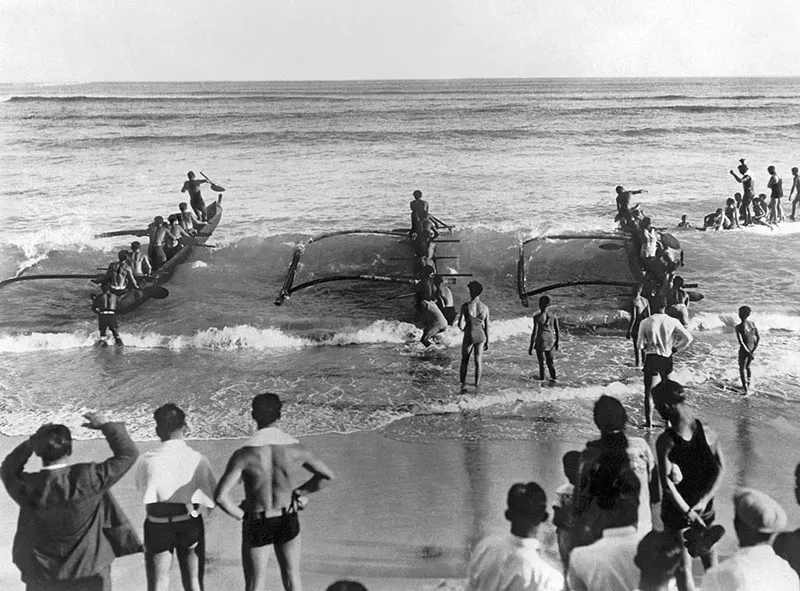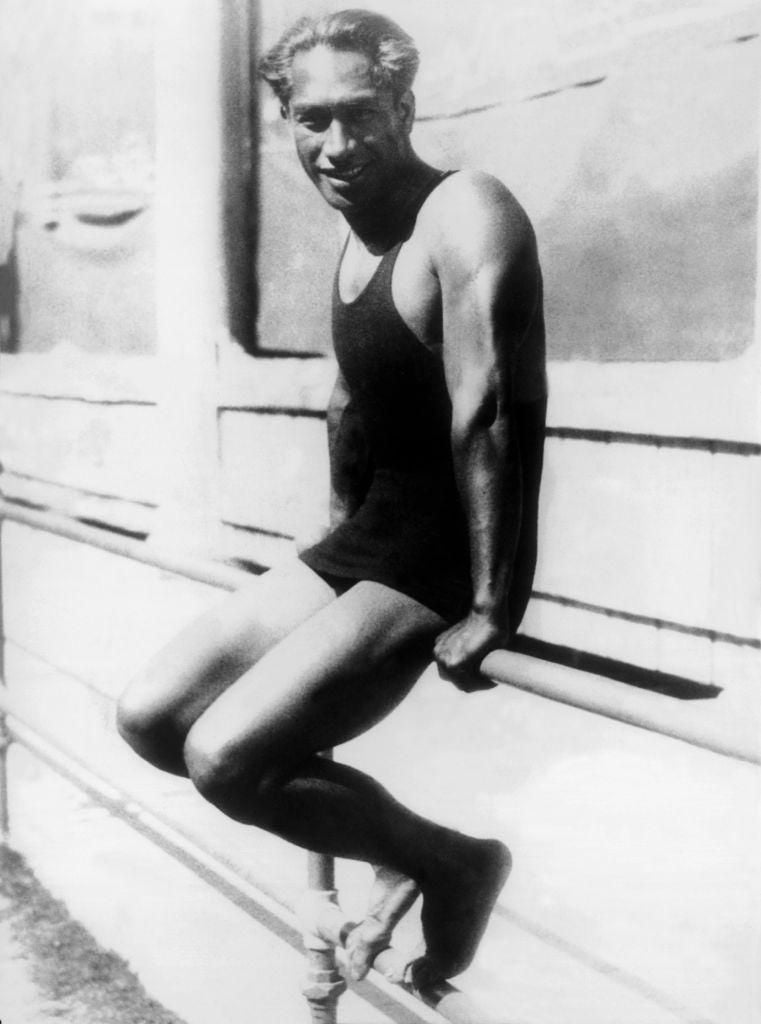Learn to Surf on the Break Where It All Began
Waikiki Beach on O’ahu is the home of surfing—and you can take lessons there too
/https://tf-cmsv2-smithsonianmag-media.s3.amazonaws.com/filer/01/56/01562926-e05a-447d-99e2-1a702f1340ca/outrigger.jpg)
In the lobby of the Outrigger Waikiki Beach Resort, a wooden koa canoe—more than 100 years old and named Kaukahi—reflects the lights of the room in its highly polished surface. It looks brand new, and unless you ask, you’d never know of its age and connection to an ancient Hawaiian sport: surfing.
The canoe itself is the outrigger style, which means that aside from the main hull, there’s a lateral support float parallel to the boat. When Kaukahi was first built in the late 1800s, it was a multipurpose vessel, one used for fishing, sailing and surfing; to break up the monotony of the day out on the water, sailors would climb out onto the outrigger beam and surf on it like a surfboard. Outrigger surfing still exists as a separate entity on the islands. Surfing with just the board, though, was already a deeply ingrained part of Hawaiian culture when Kaukahi was built.
The earliest origins of surfing date back about 3,000 years, when fisherman in western Polynesia rode waves with canoes to quickly surf their catches back to shore. By the time Captain James Cook voyaged to Tahiti in the 1700s, the local fisherman had transformed canoe surfing into a fun pastime. He recorded it in his notes:
On walking one day about Matavai Point, where our tents were erected, I saw a man paddling in a small canoe so quickly and looking about him with such eagerness of each side. He then sat motionless and was carried along at the same swift rate as the wave, till it landed him upon the beach. Then he started out, emptied his canoe, and went in search of another swell. I could not help concluding that this man felt the most supreme pleasure while he was driven on so fast and so smoothly by the sea.
When early Hawaiians migrated to the islands from Polynesia, long before Cook happened upon Tahiti, they brought that knowledge with them—and there it transformed into the sport we know today as surfing.
“In Hawai‘i we have waves and beaches that are completely different from the rest of the Pacific,” says Tom Pohaku Stone, a native Hawaiian pro surfer and historian. “So we created surfboards to work with those waves, larger boards that you stand up on.”

There was only one catch: in the beginning, thanks to the kapu system of laws in ancient Hawai‘i, only the upper class and royals were allowed to surf, specifically on the surf break beyond what’s now the Outrigger Waikiki. They got first choice of the best boards and the best waves.
“It was seen as a place of gathering for the royalty and elite of the area,” Stone says. “They all had land around the area.”
Elaborate rituals developed around the sport, determining how and why each surfboard was made. There were four types—the paipo, used by children; the alaia, which commoners were allowed to use; the kiko‘o, for the upper class; and the olo, reserved for royalty. After craftsmen found the wood they would use for each board, they prayed and placed a kumu fish at the base of the tree before cutting it down. The board would also go through a dedication ceremony prior to its use.
In 1819, one year before missionaries from the United States arrived in Hawai‘i, the kapu system was overthrown. Among many other changes, this meant that everyone could surf as they wanted. But the missionaries, who considered the sport hedonistic, did everything they could to destroy it once they got there. They were almost successful, too; by the end of the 19th century, surfing had all but disappeared, save for a few small pockets of enthusiasts here and there.
And then came Duke Kahanamoku, an Olympic swimmer and native Hawaiian who loved to surf. He gathered a few of his friends, and in 1905, formed the Hui Nalu Surf Club. In 1908, another group of surfers founded the Outrigger Canoe Club. The two clubs began to have friendly surfing competitions, bringing attention to the sport, but eventually Outrigger faded into a social club and Hui Nalu took on the task of reintroducing Hawai‘i and the world to surfing. Duke and his friends, who became known as the Beach Boys of Waikiki, brought surfing back to national and international attention as missionary influence in the islands faded. They pushed hard in tourism, actively advertising and offering lessons to tourists staying at the hotels that spanned the length of Waikiki Beach.

“[For Duke,] surfing was a way of bringing people together, showing the importance of our culture and why we should continue to maintain it,” Stone says.
By 1920, surfing was the main tourist attraction in Waikiki.
Today, visitors to Waikiki can take surf lessons on the very same break where the sport first took hold. Tammy Moniz runs Faith Surf School Hawaii with her husband, Tony, offering lessons outside Outrigger where Hawaiian royalty once surfed. And to the Moniz family—including their daughter, a two-time Women’s Professional Surfing World Champion who grew up using that surf break—that’s something pretty special.
“Surfing is known as the sport of kings,” says Moniz. “And here we are today, on the same beach, same sand, same air as our forefathers of surfing. There is nothing more glorious than learning to surf and improve on your surfing ... in Waikiki. The best in the world and the best in Hawai‘i have come from this beach, this surf break.”
Stone agrees—and says learning to surf in Hawai‘i in general, not just in Waikiki, is equally meaningful thanks to the history of the sport as a cultural mainstay throughout all the islands.
“The first time you ever catch a wave, it’s the glide that puts a big smile on your face,” he said. “To learn to surf, you appreciate that cultural connection. Only here in Hawai‘i can you make contact with the living culture of surfing.”
/https://tf-cmsv2-smithsonianmag-media.s3.amazonaws.com/accounts/headshot/JenniferBillock.png)
/https://tf-cmsv2-smithsonianmag-media.s3.amazonaws.com/accounts/headshot/JenniferBillock.png)